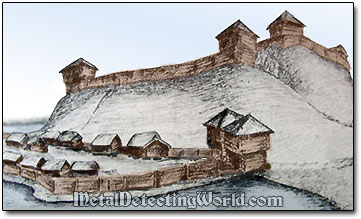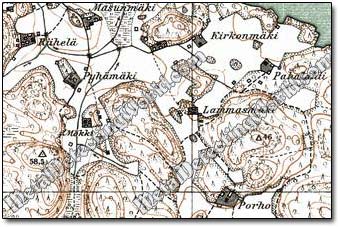Metal Detecting Research and Exploration - A Complete Guide, page 9
Map Research for Locating Metal Detecting Sites in Europe
IMPORTANT SPECIFICS THAT SHOULD BE TAKEN IN CONSIDERATION
The following geographical, historical, cultural and toponymical specifics are characteristic for the East-European regions and should be taken into account during metal detecting research and exploration. These specifics may be observed in other areas of Europe or anywhere else; thus, if you metal detect in those areas, you can take similar approaches to researching the maps and other forms of research described below.
1. Settlement Patterns and Types of Settlements in Eastern Europe
Settlement patterns refer to the form, density and distribution of human settlements, and how these change over time. During the Early Modern Period, the settlement pattern in rural areas of Eastern Europe was quite opposite to the settlement pattern, characterized by individual homesteading, that prevailed in the US during the 18th-19th centuries.
In Europe, the first inhabitants initially formed the communities that settled down in fortified villages for protection against their unfriendly foes or hostile forces. Hillforts built on elevated areas allowed to observe and control the adjoining territory at least for several kilometers far.
An Example of Promontory Hill Fort with Satellite Settlement

Over time, the fortifications around settlements had gradually disappeared, but the old tradition of living in a community style was kept. Historically, there have been two most common types of rural settlements in Eastern Europe: derevnya (small village) and selo (large village).
The formal indication of status was religious: a selo had a church or chapel, while a village had neither. A medieval city had a cathedral. Still today the vast majority of rural population lives in the same traditional way - in selos and derevnyas.
Only a few regions in Eastern Europe have been exceptional to this tradition. While peasants of central Eastern Europe lived in a village around the lord's manor, a Cossack family in Southern Europe often lived on its own farm, called khutor. A number of such khutors plus a central village made up the administrative unit stanitsa - a dispersed settlement. Such a stanitsa village, often with a few thousand residents, was usually larger than a selo in central Eastern Europe.
Also in the Baltic states - Estonia, Latvia and Lithuania, a large part of the rural population settled in single-standing farmsteads scattered broadly over the landscape. Another example could be found in North-Eastern Europe and Scandinavia where the peasants could settle down only at the scarce patches of arable land dispersed throughout the rough terrain, and only one homestead per patch. In a few cases, where it was possible, woodland clearances produced small hamlets around village greens. An example of a hamlet would be a small cluster of houses surrounding a mill.
A Fragment of Finnish 1:20,000 Topo Map Shows Single Homesteads
